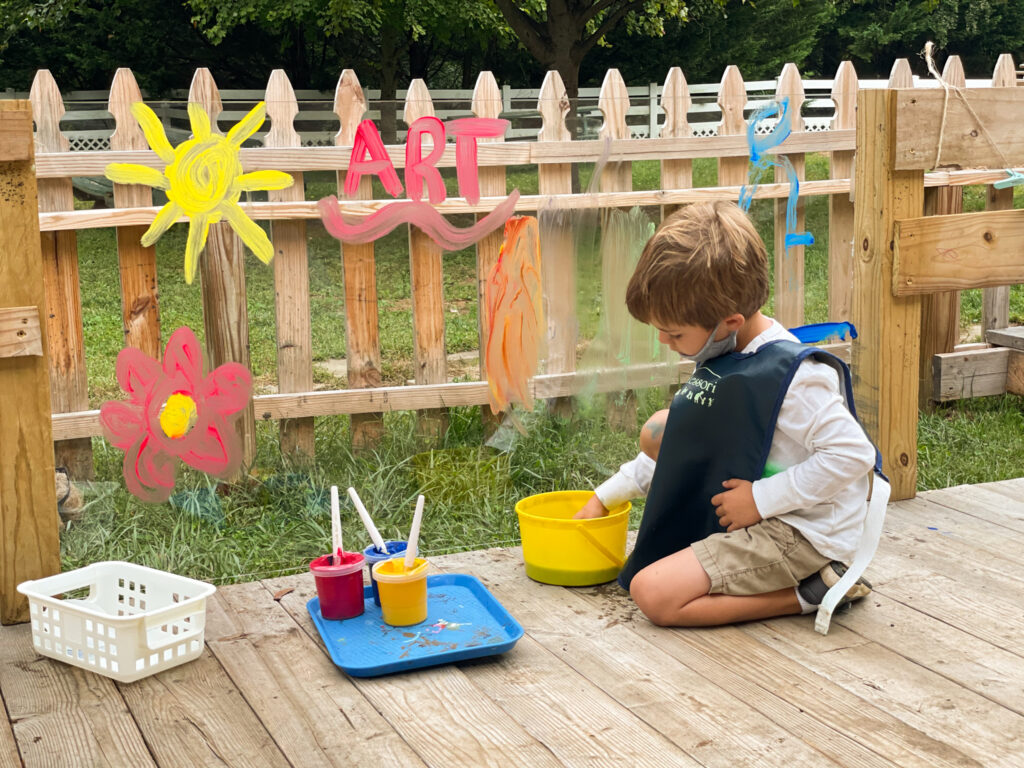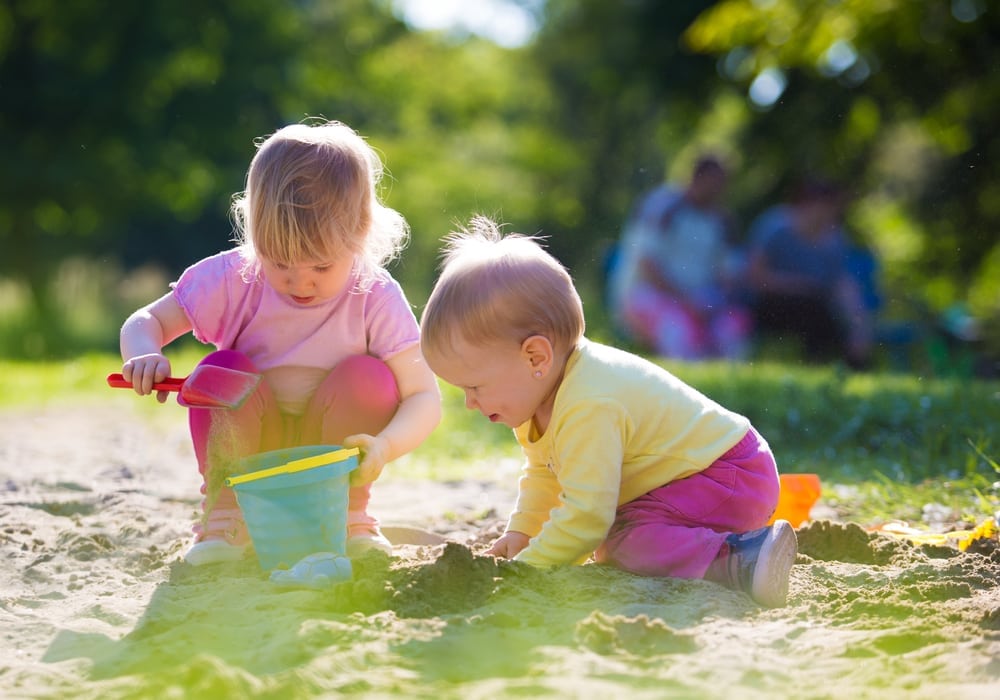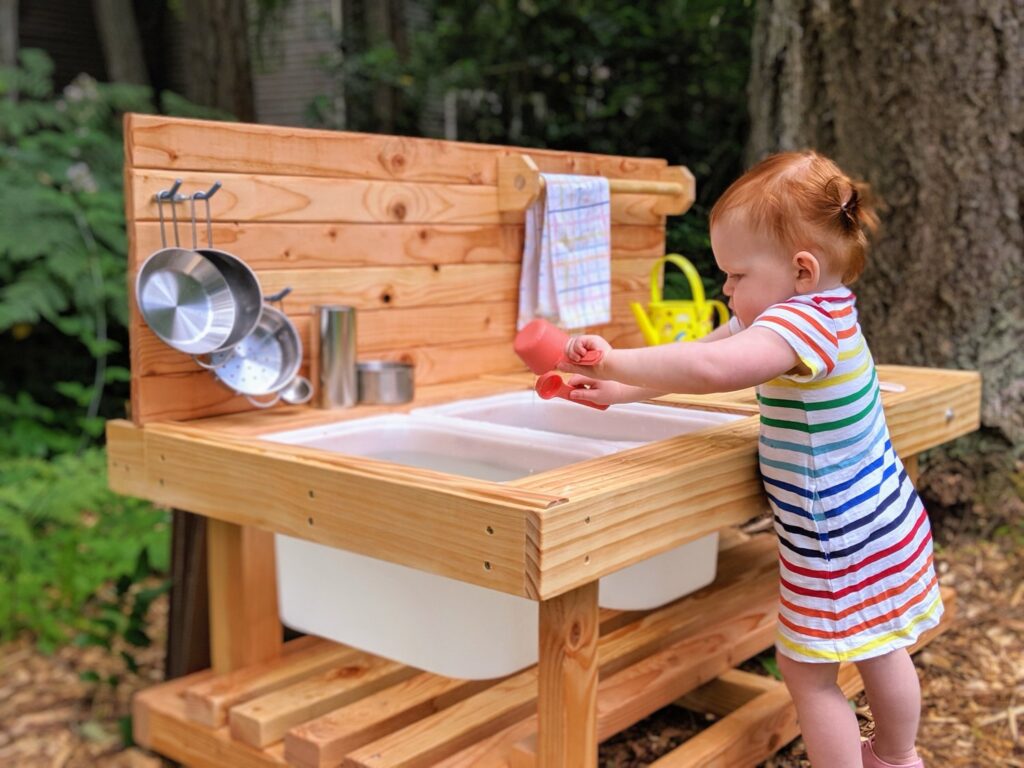Young children need sensory stimulation and room to move, so instead of keeping kids indoors, many early learning services recognise the importance of outdoor play and offer a variety of open-air experiences.
Children might spend their days tending to veggie patches, excavating sandpits or galloping across grass, and there’s evidence that all this al fresco activity has a positive effect on youngsters’ bodies and brains.
Outdoor play has both mental and physical advantages for under-fives.
When it comes to behaviour, studies have shown that children who play outside in a natural environment have better stress and mood recovery capabilities, are calmer and can concentrate better, for longer periods.
Cooperative outdoor play also provides an opportunity for children to learn group dynamics, work collaboratively and increase their social skills.
Outdoor learning provides increased opportunities for vigorous physical activity too (keeping in mind that some children need encouragement, and being outside is not always enough to be active). This physicality provides children with a healthy body, as muscles and bones respond to the activity, and it provides opportunities for children to develop their very important gross motor skills as they walk, run, jump, climb and practice their general coordination.
Exposure to a safe level of vitamin D from sunlight keeps bones and muscles strong and healthy, and it also assists in brain development and function, supporting each child’s ability to learn new things.
Young children also learn how to take safe risks, plan, problem-solve, negotiate and multi-task in the comfort of a safe and supervised outdoor environment.

What outdoor activities do the children get up to while in your care?
The children are free to choose if they want to spend time indoors or outdoors. Inevitably their natural preference is to be outside for 90 per cent of the day. During free play is when the children’s imagination comes alive and their vocabulary grows. Their social skills are also developing as they role-play.
When a child isn’t at care, how can parents incorporate outdoor play into their home life?
Outdoor play with children is so easy and it’s often free.
Children are natural explorers and full of curiosity, which means that a collection of rocks, leaves and sticks can become a million different things. They can be used on so many craft activities, igniting the child’s inner artist. Painted rock collections are always a hit, as well as gluing on flowers or leaves to complement a drawing.
If a child is playing inside with their toys, parents just need to bring the toys outside. It gives the youngster’s role-playing another dimension, opens up more possibilities and gets them wanting to be outside more and more.
Also, I recommend that parents let children take risks. This can be understandably hard for some parents, but taking a step back and letting a child assess the risk and attempt a task is so rewarding and beneficial for their development. Don’t stop them from climbing that tree, just be there to lend a hand when needed.
Finally, remember that children are water and dirt-proof. They can be washed, so let them get dirty. There are so many physical and mental health benefits associated with messy, sensory play, so it’s always a good idea.

How do you tailor outdoor activities to each child’s age and interest?
Having a range of ages together is a wonderful benefit of family day care, and all activities can be modified to make sure everyone is included.
Examples include gentle soccer games, providing more support for young ones through the obstacle course and having ‘easy’ items to find in the treasure hunt, as well as more elusive ones.
For instance, we might recreate a farm after a child visited a real farm over the holidays, encourage superhero role-play to get children racing around the yard, put on a concert for musical children, using the stone steps as the stage, or create a monster truck course in the sandpit.
It is also important to let the children have free time and decide what and how they play. They often imitate real life and incorporate this into their play as a way of making sense of their world and all the social rules. It is also an opportunity to let their imaginations take flight, allowing them to create their own worlds and situations as they go.

Activities and routines are carefully tailored to each child’s needs, and with fewer distractions than in a large group, educators can really focus on each child’s social skills and getting them ready for the school experience.
Also, having a range of ages can be a huge advantage in small groups because the younger ones learn in leaps and bounds by observing older children, and the older children love mentoring and teaching younger ones, which gives them a chance to experience and develop their leadership skills.

